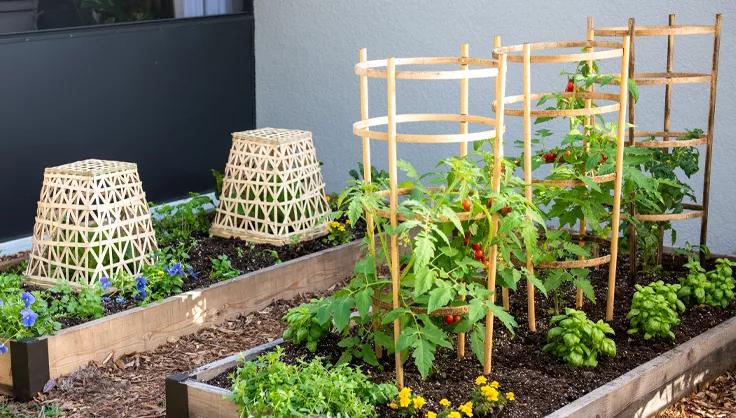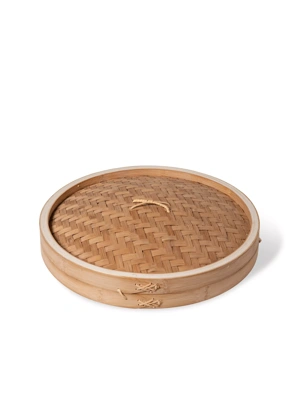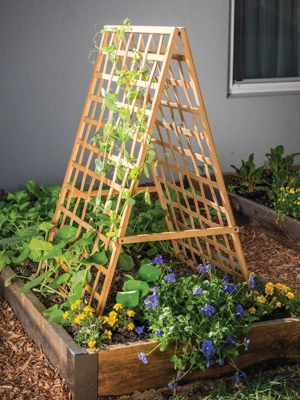Beautiful Bamboo: Sustainable, Strong, and Stylish
Welcome to the wonderful world of bamboo!

Bamboo products are not new to the garden scene. Bamboo poles and bamboo canes have long been favored by the nursery industry for supporting small trees because it's strong and flexible enough to withstand high winds. Bamboo screens, trellises, harvest baskets, decor, and fencing are finding their way into gardens in a variety of ways.
So what is all the fuss about this humble grass?
Why Bamboo?
It's easy to grow.
First of all yes, bamboo is actually a grass (not a tree!). It grows well in most climates, tolerates nutrient-poor soils, and there are varieties that thrive in either sun or shade. Furthermore, cutting bamboo actually encourages the growth of new shoots; the more you harvest, the more the plant grows. Bamboo spreads via rhizomes, which are underground lateral stems that put out additional shoots (that grow up) and roots (that grow down). And it grows fast — some varieties will grow as much as 2 feet in a single day. Gardeners take note; several types of running bamboo are considered invasive in parts of the US and should not be added to the garden! However, due to its fast growth and ability to regenerate quickly afer harvest, bamboo has the potential to be a super sustainable commercial crop and plastic alternative.
It's super strong.
With a higher strength-to-weight ratio than steel and concrete, bamboo is undeniably strong. Despite an incredibly high tensile strength, bamboo is also extremely flexible. Because of this, bamboo has been used as a construction material to build houses, boats, and furniture. It's also been used to make utensils, baskets, floormats, fencing, and even toilet paper.
It stores carbon.
Because of its vigorous growth rate and ability to take in carbon dioxide (like all plants), large stands of bamboo have the potential to store (or "sequester") carbon. Climate change is largely driven by increases in carbon dioxide and other greenhouse gases in the atmosphere. By sequestering carbon, plants and soil can help slow and prevent global warming. And bamboo is particularly good at it — in one study, a stand of bamboo stored 2-4 times more carbon than a stand of red pine and fir trees of a similar acreage.
It's biodegradable.
Unlike plastic products, untreated bamboo is biodegradable and YES, even compostable. It will take a lot longer to compost than the usual grass clippings and kitchen scraps; bamboo contains lots of lignin (a compound similar to cellulose) which is what makes it incredibly rigid but also slow to decompose.
Despite all these benefits, commercial use of bamboo does have a few drawbacks to consider:
- Even if bamboo is considered a sustainable crop to grow, transporting it thousands of miles by fossil-fuel-based transport makes for a pretty large carbon footprint. This is true for just about any agricultural product that is globally sought after.
- Clearing old growth woody forests to make way for fields of cultivated bamboo leads to increased carbon emissions as well as the destruction valuable wildlife habitat. Fortunately, because of bamboo's ability to grow well in poor, eroded soils, it can be used to restore already-developed sites.
Nevertheless, bamboo is currently one of the most ecologically-sound alternatives to plastic out there. Put bamboo to work in your garden this season!
Our Favorite Ways to Use Bamboo in the Garden
| Using Bamboo in the Garden | |
| Plant Supports | |
| Plant Protection | |
| Fencing | |
| Harvest Storage | |
| Grow Lights |
Low Bamboo LED Grow Light Garden Medium Bamboo LED Grow Light Garden |
Last updated: 05/03/2023
Print this Article:
Related items
Get the Dirt
Stay up to date on new articles and advice. Please fill out the information below.












